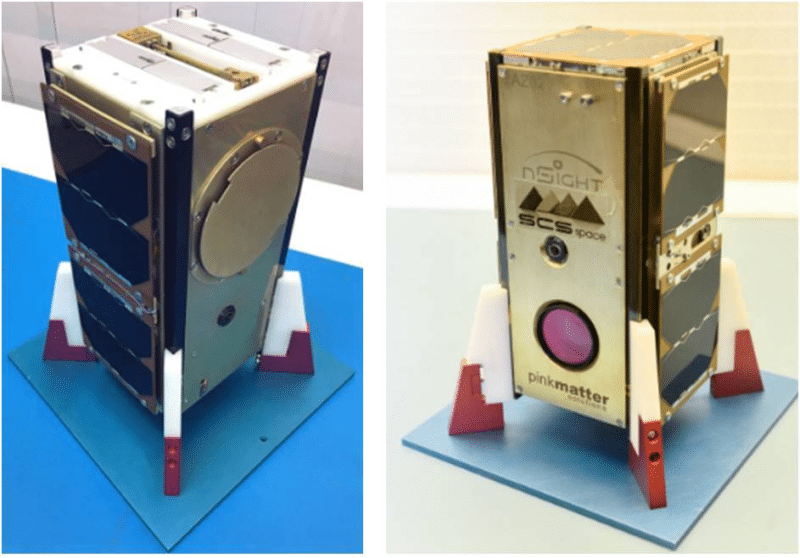South Africa Satellite Industry Grows with Nanosats Launch

ZA-Aerosat and Nsight 1. Photo: SCS Aerospace Group.
The South African satellite industry is taking yet another step forward as a player in the international arena with the April 18 launch of two South African-built nanosatellites onboard a United Launch Alliance (ULA) rocket from Cape Canaveral, Florida. NSight 1, designed and manufactured by Cape Town-based SCS Space, a member of the SCS Aerospace Group, and ZA-Aerosat, designed and manufactured by CubeSpace of the Stellenbosch University, will launch as part of a batch totaling 28 nanosatellites from 23 different countries.
According to ULA, the Atlas 5 and Cygnus OA 7 launch is set for April 18 at 11:11 a.m. EDT, following a number of rescheduled events due to ground equipment readiness. Their initial destination is the International Space Station (ISS), where the ISS crew will unload and transfer the satellites to deployers with the help of robotic arms. The crew will eventually deploy the satellites in Low Earth Orbit (LEO) over a period of 30 to 60 days as the ISS orbits the Earth.
The SCS Space nSight1 satellite project is a joint investment by SCS Aerospace Group and Pinkmatter Solutions, who supplied the ground segment software. Engineers from the Space Advisory Company designed, integrated and tested the satellite before assembling it in the clean room of NewSpace Systems, both part of the SCS Aerospace Group. A key part of the satellite’s mission is to test the newly developed SCS Gecko Imager as well as Nelson Mandela Metropolitan University’s patented Radiation Mitigation Very High Speed Integrated Circuit (VHSIC) Hardware Description Language (VHDL) Coding Technique.
The satellites are part of the QB50 project funded by the European Union and managed by the von Karman Institute to conduct research in the lower thermosphere between 200km to 380km altitude. Researchers will use the data collected from this experiment over a period of 18 months to complement current atmospheric models especially applicable to reentry trajectories of spacecraft. All the nanosatellites will eventually burn up at the end of their operational lifetimes.